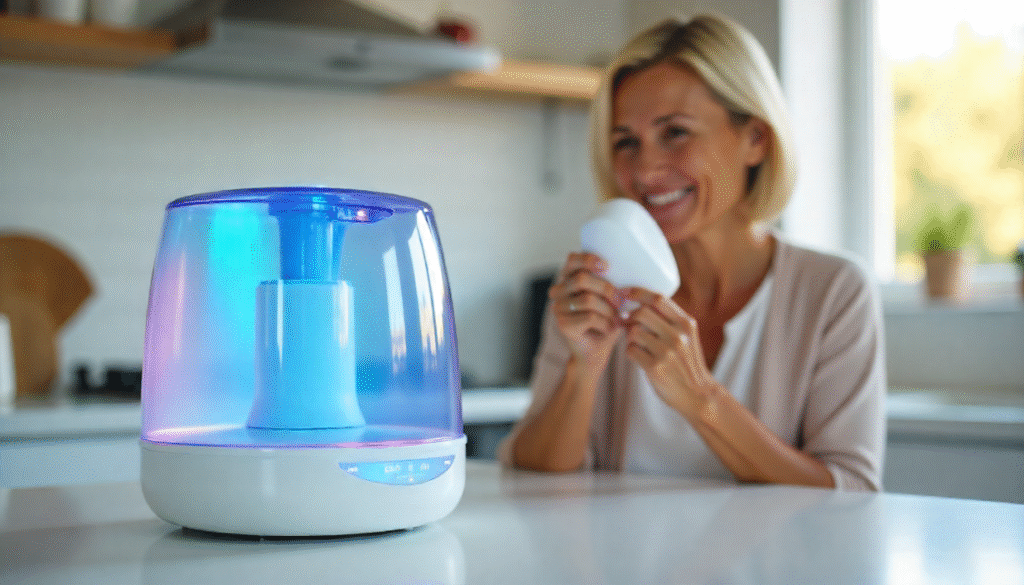A Nebulizer Machine is a small device that helps people breathe easier. It changes liquid medicine into a fine mist that you can inhale. This is very helpful for people with asthma, allergies, or other breathing problems. Children, adults, and even older people can use a nebulizer machine safely at home. It makes taking medicine easier because you just breathe it in instead of swallowing pills or using sprays. Many doctors recommend a nebulizer machine for people who need quick relief from breathing issues. It is simple to use and can make a big difference in daily life.
Using a nebulizer machine is not only safe but also very effective. It works faster than some other medicines because it goes straight into your lungs. People with chronic illnesses like asthma or COPD can use it regularly to prevent breathing problems. A nebulizer machine is quiet, easy to clean, and portable, so you can use it at home or even while traveling. Learning how to use it properly ensures the medicine reaches your lungs and works correctly. If you follow instructions, a nebulizer machine can make breathing much easier and improve your overall health.
What is a Nebulizer Machine and How It Works
A nebulizer machine is a device that turns liquid medicine into a mist. This mist goes directly into your lungs when you inhale. The medicine works faster this way because it reaches the airways directly. Nebulizer machines are helpful for people with breathing problems like asthma, COPD, or lung infections. There are different types of nebulizer machines, including jet, ultrasonic, and mesh models. Each type works a little differently, but the main goal is the same – to deliver medicine to your lungs efficiently.
The machine usually has three main parts: a medicine cup, a mask or mouthpiece, and a small motor or compressor. The medicine goes in the cup, and when the machine runs, it makes tiny droplets that you breathe in. Using a nebulizer machine correctly ensures the medicine works the best. It is safe for children and adults, and it is often used at home for daily care or during sickness.
Types of Nebulizer Machines: Which One is Right for You
There are three main types of nebulizer machines:
- Jet Nebulizer: This is the most common type. It uses compressed air to turn liquid medicine into mist. It is affordable and works well for most people.
- Ultrasonic Nebulizer: This type uses high-frequency vibrations to create mist. It is quieter and faster than jet models.
- Mesh Nebulizer: This is small and portable. It uses a mesh screen to make medicine into mist. It is perfect for travel or quick use.
Step-by-Step Guide to Using a Nebulizer Machine at Home
Using a nebulizer machine is simple if you follow the steps carefully:
- Wash your hands before using the machine.
- Pour the prescribed medicine into the medicine cup.
- Attach the mask or mouthpiece to the machine.
- Turn on the nebulizer machine.
- Sit comfortably and breathe normally through the mouthpiece or mask.
- Continue until the medicine is finished, usually 10–15 minutes.
- Turn off the machine and clean it after every use.
Benefits of a Nebulizer Machine for Children and Adults
A nebulizer machine has many benefits:
- Quick Relief: It delivers medicine fast during asthma attacks or breathing problems.
- Easy to Use: No need to swallow pills; just breathe in the medicine.
- Safe for All Ages: Children, adults, and older people can use it.
- Portable: Some models are small and easy to carry.
- Effective for Chronic Illness: Helps people with asthma or COPD prevent severe symptoms.
How to Clean and Maintain Your Nebulizer Machine

Cleaning a nebulizer machine is very important to prevent infections and keep it working well. Here’s how to clean it:
- Wash all parts (except the motor) with warm soapy water after each use.
- Rinse thoroughly and let them air dry.
- Disinfect the parts at least once a week by soaking in vinegar or boiling water (check the manual).
- Replace the mask, mouthpiece, and tubing as needed.
- Store the machine in a clean, dry place.
Common Mistakes to Avoid When Using a Nebulizer Machine
- Skipping Cleaning: Dirty parts can cause infections.
- Not Following Instructions: Using the wrong technique reduces medicine effectiveness.
- Overfilling the Cup: Only use the prescribed amount of medicine.
- Ignoring Maintenance: Replace worn-out parts to keep the machine working.
- Using Wrong Medicine: Always use medicine prescribed by your doctor.
When to See a Doctor About Your Nebulizer Machine
Sometimes, even with a nebulizer machine, breathing problems can get worse. See a doctor if:
- You have frequent asthma attacks.
- Medicine does not relieve symptoms.
- You notice unusual noises or malfunctions in the machine.
- Children show severe breathing difficulty.
Nebulizer Machine Tips for Travel and Daily Life
- Carry a portable or mesh nebulizer for travel.
- Keep extra masks and medicine if you are away from home.
- Use the machine in a quiet, comfortable place.
- Teach children how to use it safely.
- Always follow cleaning and maintenance routines, even on trips.
Conclusion
A nebulizer machine is a simple, effective way to help people breathe better. It works for children, adults, and older people with asthma, allergies, or chronic lung conditions. Using it correctly and cleaning it regularly keeps it safe and efficient. Choosing the right type and following instructions makes breathing easier and improves health. A nebulizer machine is more than just a device; it is a tool that brings comfort and relief to daily life.
FAQs
Q1: Can anyone use a nebulizer machine?
A: Yes, it is safe for children, adults, and older people, but always follow the doctor’s instructions.
Q2: How often should I clean my nebulizer machine?
A: Clean it after every use and disinfect at least once a week.
Q3: Can a nebulizer machine replace inhalers?
A: It can complement inhalers but usually does not replace them. Always follow your doctor’s advice.



